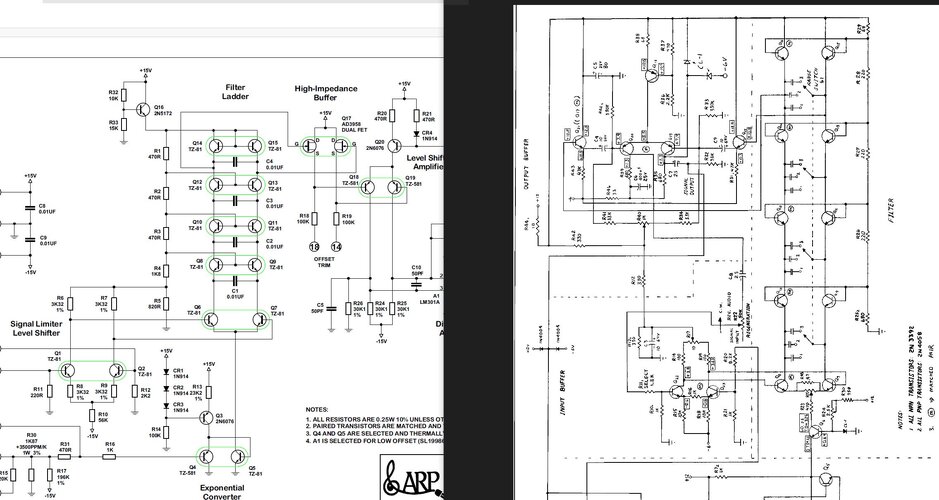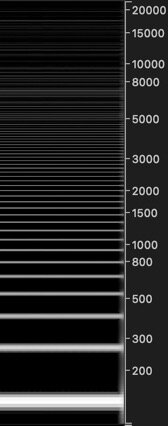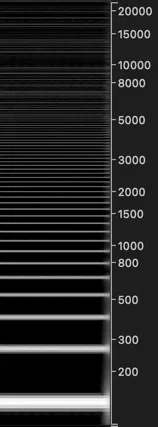Beim matriarch wird hinten raus ja auch gefiltert (siehe matriarch modifikations ding von tony allgood; filter buffer). Würde eher auf sowas tippen als auf falsche bedingsung.
Danke für den Tipp, es ist beim Matriarch sogar tatsächlich gar nicht der Filter sondern doch der Main-Out:
"
We can see that compared to the raw sawtooth the eurorack output is somewhat low pass filtered cutting off the highs. This is significant, but now look at the main outputs which are even more filtered - some 15dB lower at 20kHz. Although most of us don't have ears good enough to hear up to 20kHz, a reduction of 15dB at 20kHz will have a significant impact lower down the audio band. Note the main output starts to attenuate the signal noticeably over 7kHz.
In addition I found that there was a moderate high frequency cut between the VCF output and the VCA input. You can test this out easily enough by simply connecting the VCF to the VCA with patch cords and comparing the sound when using just the internal normalised connections.
Dealing with the difference between the eurorack output and the main output first. The main output uses a dual SSI 2164 VCA circuit to allow the volume pot on the front panel to control the output level. The op-amp that takes the output of the VCA chip and converts it to a voltage has a considerable amount of HF cutting, over -10dB at 20kHz, and appears to start to roll off around 7kHz. This can be corrected by changing the two feedback capacitors, C348 and C355, around U39A and U39B, from 1n2 to 150pF. Both capacitors are C0G 0805 surface mount types. The VCA circuitry is on the right hand circuit board.
The eurorack output is also slightly filtered on the right hand output board and this can be alleviated by changing C15, C18, C19, and C24 from 470pF to 150pF. These are all C0G 0603 capacitors.
Some additional filtering can also be found in the dry/wet mixer circuit. This can be corrected by changing the feedback capacitors, C347 and C354, around the op-amp U40 from 270pF to 100pF. These are found on the right hand main board and both capacitors are C0G 0603.
The small loss of high frequencies between the VCF and VCA was tracked down to two circuit blocks, one on the middle main board and the other on the right hand main board.
On the middle board the two filter outputs go through additional circuitry that allows the user to switch between dual LP, HP/LP in series, and HP/LP in parallel. This circuit has a small amount of high frequency attenuation. To reduce this you can change C301 and C302 on the middle board (near U27) from 470pF to 47pF. Both capacitors are 0603 C0G.
On the right hand board it is the circuit around U6A and U6B. Here we can change C300, C301, C302, and C303 from 470pF to 47pF. All four capacitors are 0603 C0G."
Das würde zum von mir gehörten Verhalten passen, mit dem Verlust von Passband-Gain hat das eher nichts zu tun, meine Audiobeispiele waren sowieso lautheitsnormalisiert.
D.h. ich darf potentiell also mal wieder löten, super

Nachdem der Klang wie er ist direkt so viele user angesprochen hat bzw von manchen sogar bereits als " etwas harsch" empfunden wurde (was andere wiederum nicht nachvollziehen konnten), hoffe ich eher, dass die da nichts ändern.
Am Schluss landet man mit FM, Modulationstiefen, etc dann vielleicht bei "zu spitz", "zu modern", "zu DSI". Ich befürchte, es würde was vom "vintage flair" wegnehmen.
Mein River klingt wesentlich mehr "vintage" als die Muse. Alle meine Synths mit "Vintage"-Sound haben richtig kräftige Höhen.
völlig ohne polemik gesagt, ja, interessanterweise ist muse in der öffentlichen wahrnehmung gleichzeitig zu harsch und zu dumpf. für mich spannend, was der klang (oder der name moog) an assoziationen/erwartungen auslöst.
Für mich haben beide Sachen etwas miteinander zu tun, auch wenn ein Teil des "harschen" Sounds an der Verzerrung bei unvorsichtigem Umgang mit den Mixer-Leveln liegt.
Für mich ist es halt so, wenn die Höhen bereits so gefiltert rüberkommen, ist bei zumindest bei mir die Tendenz da, den Filter weiter aufzudrehen, was für mich dann auch eher wieder "harsch" klingt.
ja, das ist ein bekanntes Verhalten bei den Propheten. Bei meinem 5er ist das glaub ich sogar noch etwas krasser ohne Env-Amt.
Beim River ebenso (hatte ich für den Vergleich auch so gemacht).
So aus Erinnerung war das beim Moog Sub37 auch so - Filter ging allein per Regler nicht ganz auf, aber mit entsprechender Modulation schon. Vielleicht lassen die da absichtlich einen Headroom?
Filter-Env Modulation war drauf und es klingt auch mit HP bei 20Hz so.



